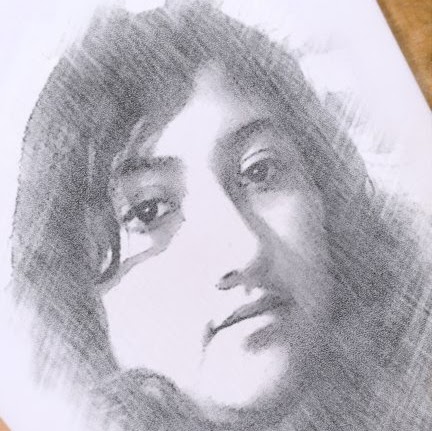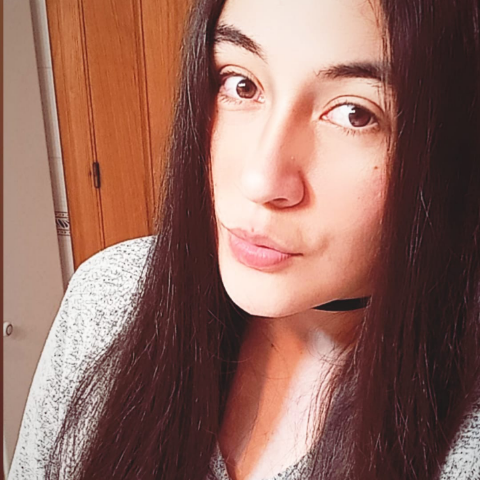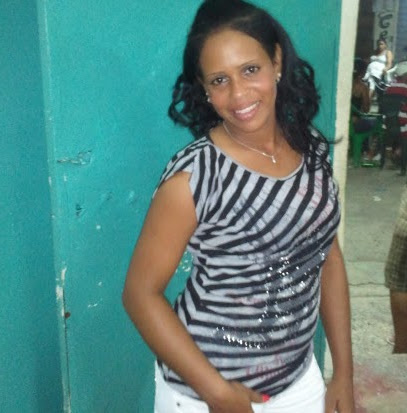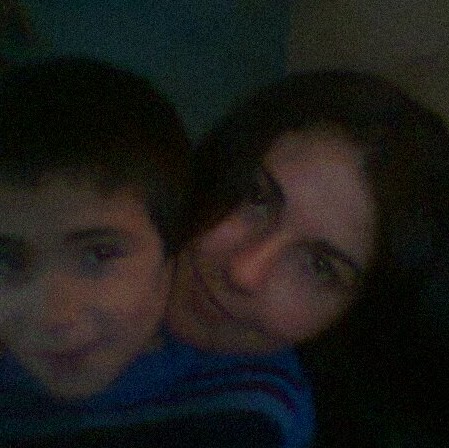Catherine R Cabrera
age ~53
from Cambridge, MA
- Also known as:
-
- Catherine Regina Cabrera
- Catherine Regina Patterson
- Catherine R Carera
- Cathy Cabrera
- Catherube Rebuga Cabrera
- Emily Bartholomew
- Phone and address:
-
8 Reed Street Ter, Cambridge, MA 02140
(617)9453000
Catherine Cabrera Phones & Addresses
- 8 Reed Street Ter, Cambridge, MA 02140 • (617)9453000
- 36 Seven Pines Ave, Cambridge, MA 02140
- 36 Seven Pines Ave #3, Cambridge, MA 02140
- 1617 48Th St, Seattle, WA 98103
- 1816 Mcgraw St, Seattle, WA 98112
- Lexington, MA
- Houston, TX
- Reston, VA
Work
-
Company:Stavros2013
-
Position:Pca
Education
-
School / High School:Northern Essex Community College- Lawrence, MA2011
-
Specialities:Associates degree Pending in Registered Nurse
Isbn (Books And Publications)

Microfluidics and Microsensors: Applications for Life Sciences, Drug Discovery and Medical Diagnostics
view sourceAuthor
Catherine Cabrera
ISBN #
0470031875
Us Patents
-
Meso- And Microfluidic Continuous Flow And Stopped Flow Electroã¶Smotic Mixer
view source -
US Patent:6482306, Nov 19, 2002
-
Filed:Sep 22, 1999
-
Appl. No.:09/404454
-
Inventors:Paul Yager - Seattle WA
Mark R. Holl - Shoreline WA
Andrew Kamholz - Seattle WA
Catherine Cabrera - Seattle WA
Katerina Macounova - Seattle WA -
Assignee:University of Washington - Seattle WA
-
International Classification:B01F 1300
-
US Classification:204600, 204450, 366341, 366349, 137808, 137827
-
Abstract:An electroÃsmotic mixing device and a method for mixing one or more fluids for use in meso- or microfluidic device applications. The mixing device provides batch or continuous mixing of one or more fluids in meso- or microfluidic channels. An electric field is generated in the channel in substantial contact with chargeable surfaces therein. No alterations of the geometry of existing flow paths need be made, and the degree of mixing in the device can be controlled by the length of the electrodes, the flow rate past the electrodes, and the voltage applied to those electrodes. The degree of mixing is affected by choice of materials for the chargeable surface (in some cases by the selection of materials or coatings for channel walls) and the ionic strength of the fluids and the type and concentration of ions in the fluids. The ionic strength of fluids to be mixed is sufficiently low to allow electroosmotic flow. The method and device of this invention is preferably applied to fluids to having low ionic strength less than or equal to about 1 mM.
-
Use Of Liquid Junction Potentials For Electrophoresis Without Applied Voltage In A Microfluidic Channel
view source -
US Patent:7141429, Nov 28, 2006
-
Filed:Oct 9, 2002
-
Appl. No.:10/268620
-
Inventors:Matthew S. Munson - Gaithersburg MD, US
Catherine R. Cabrera - Cambridge MA, US
Paul Yager - Seattle WA, US
Anson Hatch - Seattle WA, US
Andrew Kamholz - Seattle WA, US -
Assignee:University of Washington - Seattle WA
-
International Classification:G01N 35/08
B01D 17/00 -
US Classification:436 53, 436 52, 210511
-
Abstract:This invention provides methods for using liquid junction potentials to control the transport of charged particles in fluid streams that are in laminar flow within microfluidic channels. Applications of the methods of this invention include sample preconditioning (removal of interfering substances), electrophoretic separation (fractionation) of charged particles, enhanced or delayed mixing of charged particles across a fluid interface relative to diffusion only, focusing charged particles in a fluid stream in one or two dimensions, and concentration of charged reactants at a fluid interface.
-
Microfluidic Devices For Transverse Electrophoresis And Isoelectric Focusing
view source -
US Patent:20040256230, Dec 23, 2004
-
Filed:Feb 27, 2004
-
Appl. No.:10/788884
-
Inventors:Paul Yager - Seattle WA, US
Mark Holl - Seattle WA, US
Darrel Bell - Van Couver WA, US
James Brody - Pasadena CA, US
Catherine Cabrera - Seattle WA, US
Andrew Kamholz - Seattle WA, US
Katerina Macounova - Seattle WA, US
Dong Qin - Kenmore WA, US -
Assignee:University of Washington - Seattle WA
-
International Classification:B01D059/50
G01N027/26
G01L001/20 -
US Classification:204/450000, 204/600000
-
Abstract:Devices and methods are provided for separation of particles of a first selected electrophoretic mobility or isoelectric point from a fluid comprising particles of at least one other selected electrophoretic mobility or isoelectric point. The devices comprise a microchannel comprising an inlet for introducing the fluid into the microchannel; electrodes to either side of the microchannel for applying a selected voltage to produce an electrical field across the microchannel orthogonal to the length of the microchannel; and outlets in said microchannel placed to receive outlet portions of the fluid containing enhanced concentrations of each type of particle. The devices may be used for particle detection, quantification, separation, mixing, dilution and concentration. Electrophoretic tags may be used to provide particles with altered electrophoretic mobilities and/or isoelectric points. Interior particles of cells or organisms may be released, separated and detected by these devices and methods. The devices and methods may be used to separate particles such as proteins and microorganisms from biological fluids such as blood, or to separate and detect airborne contaminants such as bacterial warfare agents from air. The devices and methods may be included in devices including other separation and detection methods.
-
Sample Preparation Methods And Devices
view source -
US Patent:20050118570, Jun 2, 2005
-
Filed:Aug 12, 2004
-
Appl. No.:10/916784
-
Inventors:Mark Hollis - Concord MA, US
Nicholas Freeland Judson - Somerville MA, US
Christina Rudzinski - Belmont MA, US
Lalitha Parameswaran - Billerica MA, US
Theodore Fedynyshyn - Sudbury MA, US
Catherine Cabrera - Cambridge MA, US
Laura Bortolin - Devens MA, US -
Assignee:Massachusetts Institute of Technology - Cambridge MA
-
International Classification:C12Q001/70
C12Q001/68
G01N033/53
C12M001/34 -
US Classification:435005000, 435006000, 435007100, 435287200
-
Abstract:The present invention provides improved methods, compositions, and devices for separating and/or detecting targets from biological, environmental, or chemical samples.
-
Sample Preparation Methods And Devices
view source -
US Patent:20050277204, Dec 15, 2005
-
Filed:Feb 11, 2005
-
Appl. No.:11/056518
-
Inventors:Mark Hollis - Concord MA, US
Nicholas Freeland Judson - Somerville MA, US
Christina Rudzinski - Belmont MA, US
Lalitha Parameswaran - Billerica MA, US
Theodore Fedynyshyn - Sudbury MA, US
Catherine Cabrera - Cambridge MA, US
Laura Bortolin - Devens MA, US
Robert King - Lexington MA, US
Matthew Angel - Lexington MA, US -
Assignee:Massachusetts Institute of Technology - Cambridge MA
-
International Classification:G01N033/543
-
US Classification:436518000
-
Abstract:The present invention provides improved devices for separating and/or detecting targets from biological, environmental, or chemical samples.
-
Use Of Liquid Junction Potentials For Electrophoresis Without Applied Voltage In A Microfluidic Channel
view source -
US Patent:20060196771, Sep 7, 2006
-
Filed:May 22, 2006
-
Appl. No.:11/419717
-
Inventors:Matthew Munson - Gaithersburg MD, US
Catherine Cabrera - Cambridge MA, US
Paul Yager - Seattle WA, US
Anson Hatch - Seattle WA, US
Andrew Kamholz - Seattle WA, US -
Assignee:University of Washington - Seattle WA
-
International Classification:C07K 1/26
G01N 27/447 -
US Classification:204451000, 204601000
-
Abstract:This invention provides methods for using liquid junction potentials to control the transport of charged particles in fluid streams that are in laminar flow within microfluidic channels. Applications of the methods of this invention include sample preconditioning (removal of interfering substances), electrophoretic separation (fractionation) of charged particles, enhanced or delayed mixing of charged particles across a fluid interface relative to diffusion only, focusing charged particles in a fluid stream in one or two dimensions, and concentration of charged reactants at a fluid interface.
-
Microfluidic Devices For Transverse Electrophoresis And Isoelectric Focusing
view source -
US Patent:20120138469, Jun 7, 2012
-
Filed:Nov 13, 2007
-
Appl. No.:11/939292
-
Inventors:Paul Yager - Seattle WA, US
Mark Holl - Seattle WA, US
Darrel J. Bell - Vancouver WA, US
James Brody - Pasadena CA, US
Catherine R. Cabrera - Seattle WA, US
Andrew E. Kamholz - Seattle WA, US
Katerina Macounova - Seattle WA, US
Dong Qin - Kenmore WA, US -
Assignee:University of Washington - Seattle WA
-
International Classification:B01D 57/02
-
US Classification:204548, 204644
-
Abstract:Devices and methods are provided for separation of particles of a first selected electrophoretic mobility or isoelectric point from a fluid comprising particles of at least one other selected electrophoretic mobility or isoelectric point. The devices comprise a microchannel; electrodes to either side of the microchannel for applying a selected voltage to produce an electrical field across the microchannel orthogonal to the length of the microchannel; and outlets in said microchannel placed to receive outlet portions of the fluid containing enhanced concentrations of each type of particle. The devices may be used for particle detection, quantification, separation, mixing, dilution and concentration; to release, separate and detect interior particles of cells or organisms, and to separate particles such as proteins and microorganisms from biological fluids such as blood; or to separate and detect airborne contaminants such as bacterial warfare agents from air.
Resumes

Associate Group Leader
view sourceLocation:
8 Reed Street Ter, Cambridge, MA 02140
Industry:
Biotechnology
Work:
Mit Lincoln Laboratory May 2010 - Jun 2018
Assistant Group Leader
Mit Lincoln Laboratory May 2010 - Jun 2018
Associate Group Leader
Mit Lincoln Laboratory May 2002 - May 2010
Full Staff
Berwanger, Inc. Aug 1995 - Aug 1996
Engineer
Environ Customer Care B.v. Jul 1993 - Jul 1995
Junior Associate
Assistant Group Leader
Mit Lincoln Laboratory May 2010 - Jun 2018
Associate Group Leader
Mit Lincoln Laboratory May 2002 - May 2010
Full Staff
Berwanger, Inc. Aug 1995 - Aug 1996
Engineer
Environ Customer Care B.v. Jul 1993 - Jul 1995
Junior Associate
Education:
University of Washington 1996 - 2002
Doctorates, Doctor of Philosophy, Bioengineering Rice University 1989 - 1993
Bachelors, Chemical Engineering, Biochemistry
Doctorates, Doctor of Philosophy, Bioengineering Rice University 1989 - 1993
Bachelors, Chemical Engineering, Biochemistry
Skills:
Biomedical Engineering
Matlab
Cell Culture
R&D
Nanotechnology
Signal Processing
Spectroscopy
Biotechnology
Data Analysis
Microfluidics
Microscopy
Fluorescence Microscopy
Mathematical Modeling
Pcr
Image Processing
Physics
Comsol
Matlab
Cell Culture
R&D
Nanotechnology
Signal Processing
Spectroscopy
Biotechnology
Data Analysis
Microfluidics
Microscopy
Fluorescence Microscopy
Mathematical Modeling
Pcr
Image Processing
Physics
Comsol
Interests:
Dorothy Parker
Neil Degrasse Tyson
Neil Gaiman (Author)
Elizabeth Warren
Neil Degrasse Tyson
Neil Gaiman (Author)
Elizabeth Warren

Catherine Cabrera
view source
Stylist
view sourceWork:
Hairhub
Stylist
Stylist

Catherine Cabrera
view sourceLocation:
United States

Catherine Cabrera Lawrence, MA
view sourceWork:
Stavros
2013 to 2000
Pca Hp Hewlett Packard
Andover, MA
Nov 2012 to Jan 2013
Manufacturing Associate Walgreens pharmacy
Lawrence, MA
May 2011 to Nov 2012
Photo Specialist
2013 to 2000
Pca Hp Hewlett Packard
Andover, MA
Nov 2012 to Jan 2013
Manufacturing Associate Walgreens pharmacy
Lawrence, MA
May 2011 to Nov 2012
Photo Specialist
Education:
Northern Essex Community College
Lawrence, MA
2011 to 2015
Associates degree Pending in Registered Nurse
Lawrence, MA
2011 to 2015
Associates degree Pending in Registered Nurse
Youtube
Flickr
Googleplus

Catherine Cabrera
Education:
University of the Philippines, Diliman

Catherine Cabrera
Education:
Udenar

Catherine Cabrera

Catherine Cabrera

Catherine Cabrera
Relationship:
Single

Catherine Cabrera

Catherine Cabrera

Catherine Cabrera
Myspace

Catherine Cabrera
view source
Catherine Cabrera
view source
Catherine Cabrera
view source
Catherine Joy Cabrera
view source
Catherine Cabrera
view source
Catherine Cabrera
view source
Catherine Cabrera
view source
Catherine Cabrera
view sourceClassmates

Catherine Davidson (Cabre...
view sourceSchools:
Holy Name of Jesus High School New Orleans LA 1960-1964

Catherine Cabrera
view sourceSchools:
Anna Michen Lower Elementary School Fennville MI 1996-2000
Community:
Angela Menear, Heather Skelton

Catherine Cabrera (Stuart)
view sourceSchools:
Batavia High School Batavia OH 1980-1984
Community:
Jean Hemker

Holy Name of Jesus High S...
view sourceGraduates:
Catherine Cabrera (1960-1964),
Donna Locantro (1970-1974),
Margaret Barrosse (1952-1956),
Theresa Rombach (1942-1946),
Linda Pacaccio (1957-1961)
Donna Locantro (1970-1974),
Margaret Barrosse (1952-1956),
Theresa Rombach (1942-1946),
Linda Pacaccio (1957-1961)
Get Report for Catherine R Cabrera from Cambridge, MA, age ~53






